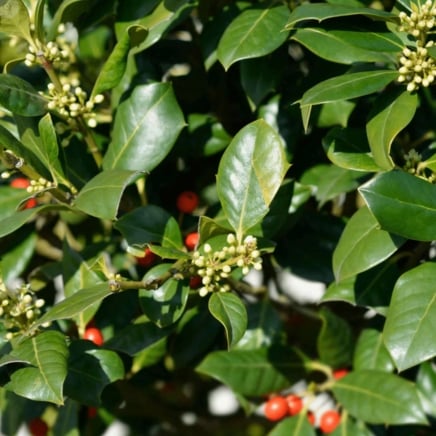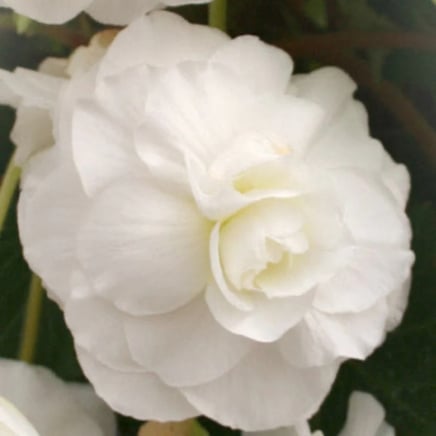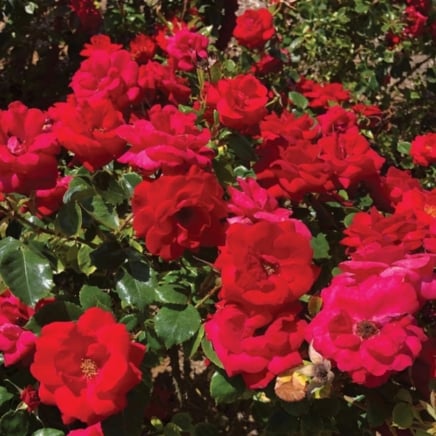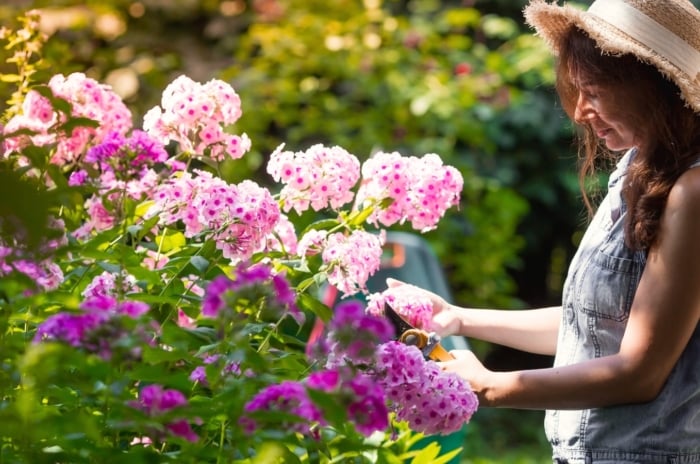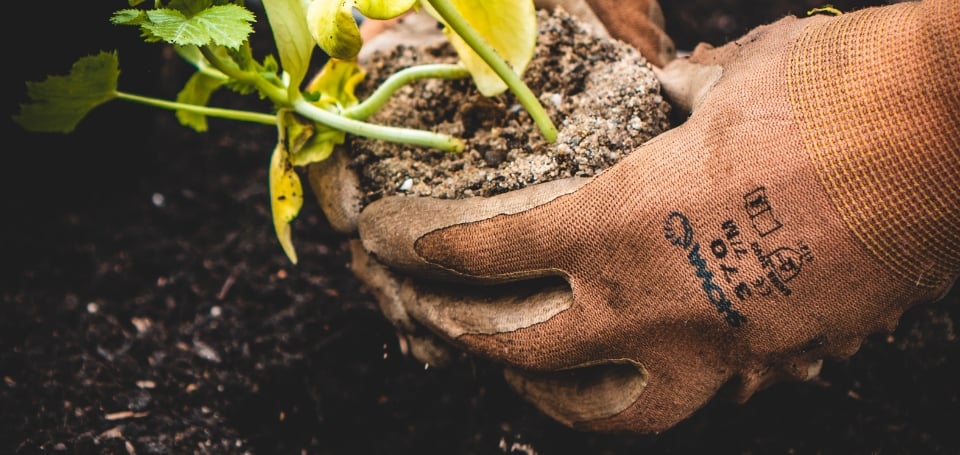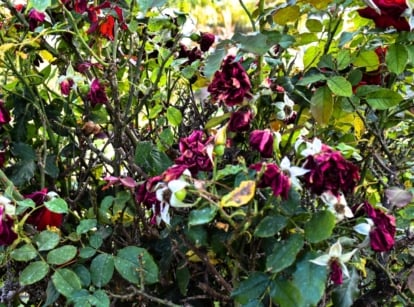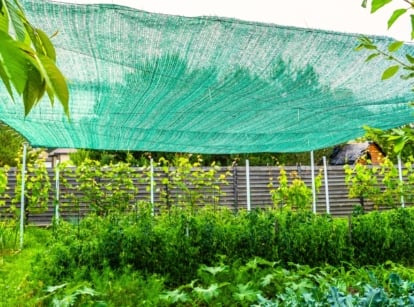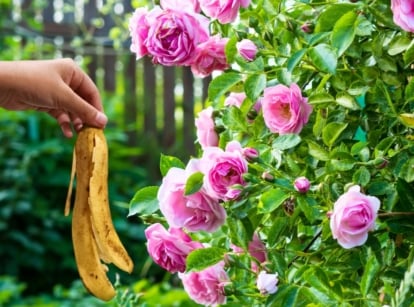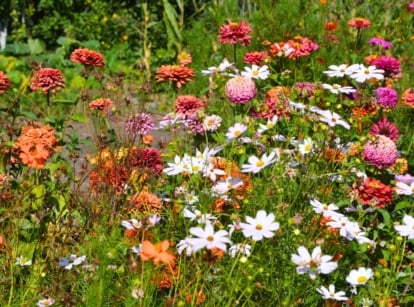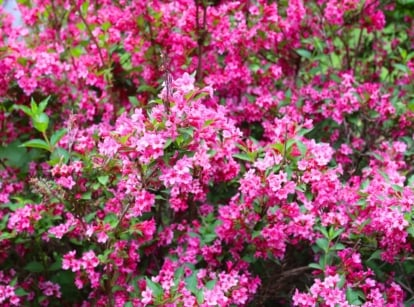It’s Your Last Chance to Fertilize These 7 Garden Plants
If your garden is looking a little languid by August, it may be time to give certain plants a nutrient boost leading up to the cool season. Gardening expert Katherine Rowe looks at select garden plants to fertilize as we head into late summer.

Contents
By late summer, many warm-season plants expend most of their energy and take a break until temperatures cool. With a high heat factor and slowing growth, altering our fertilizer schedules is helpful for lasting plant health.
If your plants need a boost from the season spent growing, apply a final round of nutrition in plenty of time before they enter winter dormancy.
For many, we’ll want to stop fertilizing by late summer to avoid promoting a new flush of growth as they prepare to overwinter. Tender new growth is susceptible to winter damage, and plants need to direct energy to their roots, rather than flushing growth, to survive seasonal extremes.
That’s why now is your last chance to fertilize these seven garden plants.
Late Season Fertilizer Overview

While most plants, including perennials, don’t require late summer fertilizer, it’s an option for those in lean soils, showing chlorotic leaves, or to offer a boost to encourage root development before cold weather. You may even get a final show of color from a fall rebloom.
Keep in mind your first anticipated frost date, and allow at least six to eight weeks before you fertilize garden plants. We want to avoid encouraging new growth as plants slow and move toward winter dormancy.
Slow-release fertilizers distribute nutrients gradually over the course of about two months. Regular granulars break down in about one month, while plants absorb liquid feeds quickly to spur growth.
Knowing the type of fertilizer and its application rate helps avoid an excess of nitrogen late in the season. Too much nitrogen leads to weak growth and increased susceptibility to pests, diseases, and cold damage.
Skip the fertilizer during heat waves and dry spells, when drought-stressed plants won’t respond well to added nutrients. Moderate temperatures and regular moisture are the best conditions for uptake. A soil test is always a good idea to gauge soil nutrition and any amendment needs.
Fall is prime for adding amendments, giving time for soils to absorb them before the spring growing season.
Garden plants to fertilize in early August during active growth:
- Conifers
- Hardwoods
- Shrubs
- Groundcovers
- Annuals
- Tropicals and tender perennials
- Crops
Rose

|
|
botanical name Rosa spp. |
|---|---|
|
|
sun requirements Full sun to partial shade |
|
|
height 3-50’ |
|
|
hardiness zones 4-11 |
Roses are easy care in the right location, given plenty of sun, good air circulation, regular moisture, and rich, well-draining soil. The flowering shrubs benefit from added nutrition in the spring and regular boosts during the growing season.
Now is the time to finish fertilizing all flowering shrubs, as those that flower in spring are well on their way to bud set. For roses, opt for a balanced blend of specialized rose fertilizer with phosphorus to promote blooming. Seaweed and alfalfa extracts are rich options for ongoing support. Foliar feeds, too, can promote a fall flush of flowers for reblooming varieties.
To foster showy rosehips for winter interest and forage for birds and wildlife, stop fertilizing, deadheading, and pruning by late August and September to allow blooms to set hips. Let the flowers fade naturally, and hold off on pruning again until late winter.
Hydrangea

|
|
botanical name Hydrangea spp. |
|---|---|
|
|
sun requirements Partial shade |
|
|
height 2-8’ |
|
|
hardiness zones 3-9 |
Hydrangeas bring big, blooming color, whether a long-flowering single-season bloomer or a repeat performer. Like roses, late summer is the last chance to fertilize these garden plants if they show a lack of vigor or to support late-season flowers.
For hydrangeas, an early spring application is often enough. An organic granular slow-release high in phosphorus, like 10-30-10, promotes growth and flowering. Refrain from overfertilizing, as too much nitrogen produces quick, weak growth with less flowering.
Stop fertilizing by early fall as plants stop actively growing and prepare for dormancy. For fall-planted hydrangea additions, hold off on fertilizing to support winter dormancy. Wait until spring to fertilize for the growing season.
Turfgrass

|
|
botanical name Varies |
|---|---|
|
|
sun requirements Full sun to partial shade |
|
|
height 2-5” |
|
|
hardiness zones Varies |
During the growing season, grasses benefit from regular fertilizer to sustain the best growth. To maintain a lush lawn, a regular monthly maintenance schedule according to grass type is usually the protocol.
Turfgrass falls broadly into warm-season and cool-season types. Warm-season grasses grow in zones 7 and above and include Bermuda, St. Augustine, centipede, and zoysia. Cool-season grasses grow in zones 6 and colder, with Kentucky bluegrass, perennial ryegrass, and tall and fine fescues as common species.
Warm-season grasses enter winter dormancy when temperatures drop. Continue to fertilize the turf until mid-August. Stop fertilizing/adding nitrogen in warm climates six to eight weeks before the anticipated first frost to prevent new growth as grass prepares for winter.
Unless overseeding with winter rye, hold off until spring to begin the regimen. But, if you live in a hot climate where grass stays green all year, go ahead and fertilize with a slow-release granular for extended seasonal nourishment.
Fertilize cool-season turf in the fall for lush blades, usually between September and October. Cool growers develop roots in autumn to store nutrients for successful overwintering. Use a quick-release granular, as there’s usually not enough time before freezing soils for slow-release. In cold climates, nitrogen may build up in the soil and is unnecessary both for the turf and the groundwater with a late application.
Azalea

|
|
botanical name Rhododendron spp. |
|---|---|
|
|
sun requirements Partial to full shade |
|
|
height 2-4’ |
|
|
hardiness zones 4-8 |
Azaleas are durable and carefree in their ideal conditions, bringing spring color with trumpet or fringey blooms that attract pollinators early in the season. North American native azaleas hail from various woodland environments, with cultivated varieties from Asian species possessing traits like reblooming and large, ruffled blooms in saturated hues.
For reblooming selections like the Encore series, a nutritive boost may promote the final flush of flowers. Use a fertilizer for acid-loving flowering shrubs, low-grade or with higher phosphorus, for late-season support.
Azaleas grow best in rich, well-drained, evenly moist soils. Native species suited to your growing zone won’t need fertilizing this time of year. Add compost in fall or spring to sustain nutrition.
Holly

|
|
botanical name Ilex spp. |
|---|---|
|
|
sun requirements Full sun to partial shade |
|
|
height 4-60’ |
|
|
hardiness zones 6-9 |
Hollies are rugged. They tolerate various site conditions that include sandy soils, high heat, humidity, and dry spells. Through it all, they anchor the landscape with a dense, leafy form, evergreen foliage, and bright red berries.
Generally, you don’t need to fertilize these garden plants. But a 10-10-10 or other organic fertilizer at planting and in spring ensures a vital growing season.
If you spot yellowing leaves, these may be a signal of chlorosis from alkaline (high pH) soils. Apply an August round of fertilizer for acid-loving shrubs, and amend soils with compost from completely broken down plant matter to lower alkalinity.
Hollies prefer well-draining soils with even moisture. Slightly acidic soils rich in organic matter are ideal, but they aren’t picky if soil conditions are less than ideal. The ideal soil pH is 6.0 or less.
Fuchsia

|
|
botanical name Fuchsia spp. |
|---|---|
|
|
sun requirements Full sun to partial shade |
|
|
height 1-3’ |
|
|
hardiness zones 6-11 |
Fuchsia boasts ornamental blooms that bob like jewels from gracefully arching stems. They produce the heaviest flush in spring, with repeat flowering throughout the warm season.
Tender, tropical types grow and produce all summer and benefit from regular feeding as a result. They also do well with pinching and pruning to maintain a robust form, from which they regrow quickly.
Avoid fertilizing heat-stressed fuchsias, as they conserve energy in extreme heat rather than direct it to growth. In mild conditions, offer the last rounds of liquid feed or granules for the annuals to encourage fall blooms.
If you plan to overwinter fuchsia in a sheltered space, this is the last opportunity to fertilize these garden plants before transitioning them inside. Cut them back heavily in early fall and bring them indoors before the first frost. Place them in a cool, dimly lit room like a garage or basement until spring. Or, move them indoors to a cool spot in bright, indirect light.
Begonia

|
|
botanical name Begonia spp. |
|---|---|
|
|
sun requirements Partial to full shade |
|
|
height 12-18” |
|
|
hardiness zones 9-11 |
Like fuchsia and other tropicals, annuals, and tender perennials, begonia can use a pick-me-up this time of year to sustain flowering. The prolific bloomers are heavy feeders that benefit from a boost of nutrients and minerals to complete their life cycle in a single growing season.
Apply an organic balanced fertilizer like 5-5-5, 8-8-8, or 10-10-10 at planting. A liquid feed during summertime flowering promotes larger blooms and longer flowering. Use applications like fish emulsion, kelp, compost tea, or a formula specific to flowering plants. Higher phosphorus (P) is more beneficial than high nitrogen (N) in the NPK ratio for boosting blooms.
Stop fertilizing in late summer as the tubers prepare to enter dormancy. In warm climates, you may find them awakening the following spring. They also grow indoors as houseplants over the winter.

